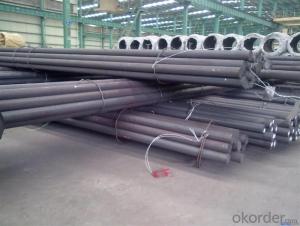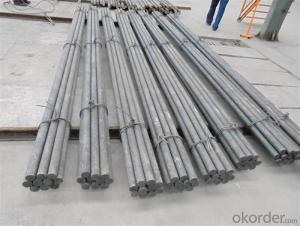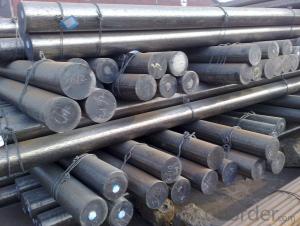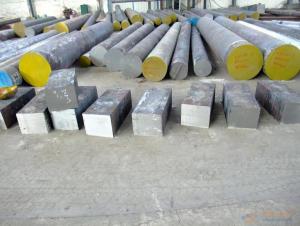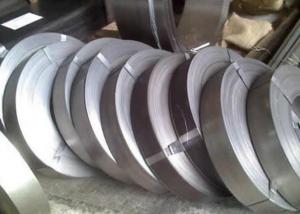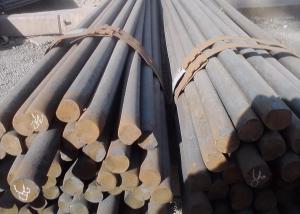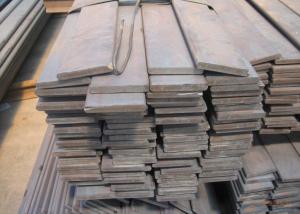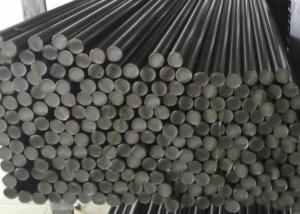AISI 4130, 4130 Steel, 4130 Steel Price
- Loading Port:
- Tianjin
- Payment Terms:
- TT OR LC
- Min Order Qty:
- 25 m.t.
- Supply Capability:
- 50000 m.t./month
OKorder Service Pledge
OKorder Financial Service
You Might Also Like
Item specifice
AISI 4130, 4130 Steel, 4130 Steel Price
Product Description:
Name | Aisi 4130, 4130 steel, 4130 steel price | |||
Features | 1, Chromium molybdenum alloy steel | |||
2, Supplied in the hardend and tempered condition | ||||
3, Lower carbon content, provide better weldability | ||||
4, Readily machineable in the condition of 18-22 HRC | ||||
Applications | 1, Widely used for oil and gas sector | |||
2, Components such as valve bodies, pumps and fittings | ||||
Sizes | Round bar | Diameter(mm) | Length(mm) | |
Max 800 | Max 9000 | |||
Plate | Thickness(mm) | Width(mm) | Length(mm) | |
Max 800 | Max 2200 | Max 9000 | ||
The above is our regular size, We also can provide customized sizes! | ||||
Packing | 20ft: GW 27T; (5.80mX2.13mX2.18m)
40ft: GW 27T; (11.8mX2.13mX2.18m) | |||
Price | The price will change according to the weight of the steel you need. | |||
Chemical analysis
C | Si | Mn | P≤ | S≤ | Cr | Ni≤ | Mo |
0.28~0.33 | 0.15~0.35 | 0. 40~0.60 | 0.040 | 0.040 | 0.80~1.10 | 0.030 | 0.15~0.25 |
Application:
AISI 4130 is a chromium molybdenum alloy steel specification. It is supplied as round bar commonly in the hardened and tempered condition with a hardness of 18-22 HRc. With a lower carbon content range AISI 4130 provides better weldability, at the expense of through thickness strength, than that of other oil and gas steel grades such as AISI 4140. AISI 4130 alloy steel is readily machineable in the supply condition of 18-22 HRc.
Specification:
Round bar | Diameter(mm) | Length (mm) | |
10~1500 | 2000~5800 | ||
plate/sheet | Thickness(mm) | Width (mm) | Length (mm) |
10~1500 | 80~2300 | 2000~5800 |
Round bar /plate can be supplied as full bar lengths or cut pieces. AISI 4130 ground steel bar can be supplied, providing a quality alloy steel precision ground bar to tight tolerances.
Product Show:

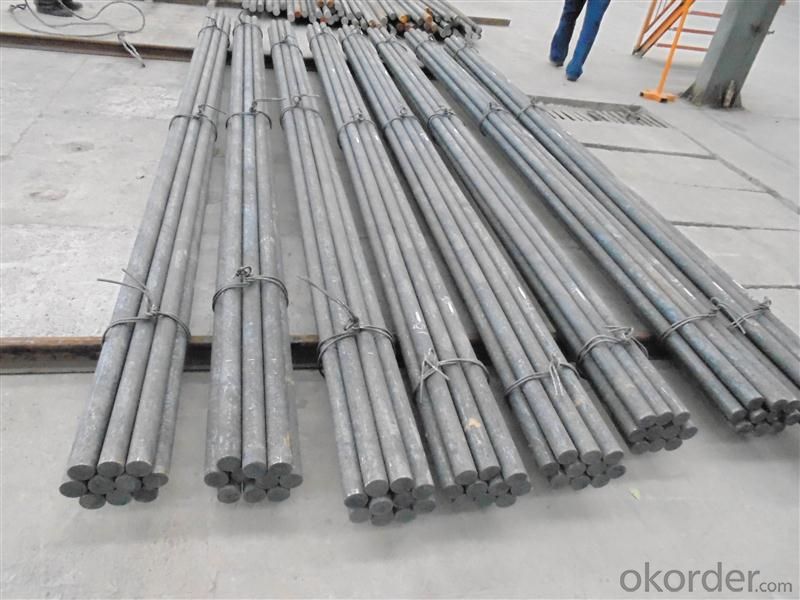
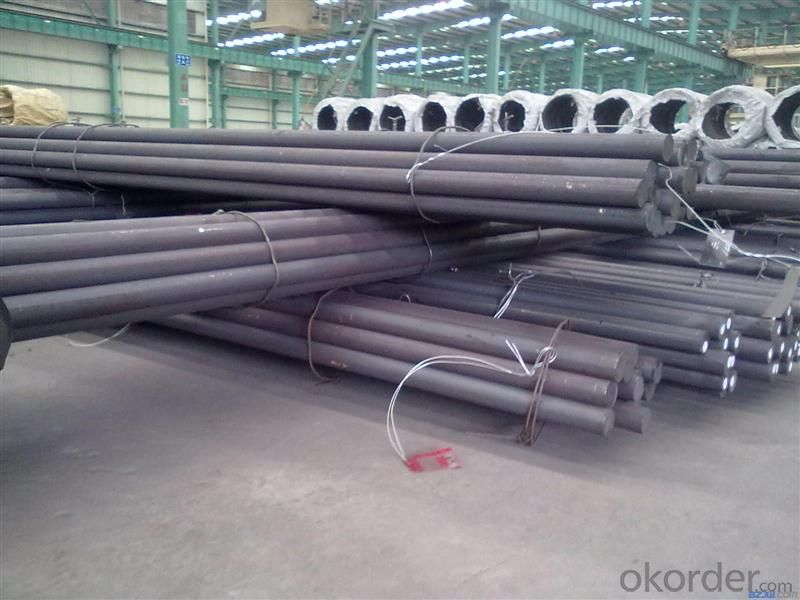
- Q:What are the main factors affecting the wear resistance of special steel?
- There are several main factors that affect the wear resistance of special steel. Firstly, the composition of the steel plays a crucial role. The addition of certain alloying elements, such as chromium, vanadium, and tungsten, can significantly enhance the wear resistance of the steel. These elements form hard carbides or nitrides within the steel matrix, which increase its hardness and resistance to wear. Secondly, the heat treatment process used on the steel greatly influences its wear resistance. Through processes like quenching and tempering, the steel can be hardened to achieve a desired level of wear resistance. The heat treatment also helps in refining the microstructure of the steel, making it more resistant to wear and deformation. Thirdly, the microstructure of the steel is another important factor. The presence of fine grains and a homogeneous distribution of carbides or other reinforcing phases within the steel matrix greatly enhances its wear resistance. Additionally, the presence of retained austenite, a metastable phase, can also contribute to improved wear resistance. Furthermore, the hardness of the steel is a key determinant of its wear resistance. A higher hardness level generally translates to better wear resistance, as it provides resistance against the abrasive forces acting on the steel surface. Lastly, the design and surface finish of components made from special steel also affect their wear resistance. The shape, size, and surface roughness of the components can influence the distribution and magnitude of the contact stresses on the steel, thereby affecting its wear resistance. In conclusion, the wear resistance of special steel is influenced by factors such as its composition, heat treatment, microstructure, hardness, and the design and surface finish of the components. By carefully considering these factors, engineers can optimize the wear resistance of special steel for various applications.
- Q:What are the main applications of special steel in the defense electronics?
- Special steel is used in defense electronics for a variety of applications. It is primarily utilized in the manufacturing of critical components such as casings, connectors, and circuit boards due to its exceptional strength, durability, and resistance to corrosion. Special steel's high magnetic permeability also makes it suitable for electromagnetic shielding, which is crucial in protecting electronic devices from external interference. Moreover, its heat resistance and ability to withstand extreme temperatures enable it to be used in electronic systems that operate in harsh environments. Overall, special steel plays a vital role in enhancing the reliability and performance of defense electronics.
- Q:How does special steel contribute to the creep resistance of products?
- The creep resistance of products is aided by special steel due to its distinct properties and composition. Creep, which refers to the gradual deformation of a material under constant stress over time, is a significant concern in industries that involve high temperatures and prolonged usage. To combat this, special steel, also known as high-temperature steel or heat-resistant steel, is specifically designed to endure these extreme conditions and minimize creep. The high melting point of special steel is one of the key factors that contribute to its resistance against creep. Typically, special steel is alloyed with elements like chromium, nickel, molybdenum, and vanadium, which considerably elevate its melting point compared to regular steel. This increased heat resistance enables special steel to retain its structural integrity and resist deformation even when exposed to elevated temperatures. The unique microstructure of special steel also plays a crucial role in its ability to resist creep. Engineers deliberately create a fine-grained structure in special steel, which enhances its strength and hinders the movement of dislocations within the material. Dislocations are imperfections in the atomic arrangement of a material that can lead to creep deformation. By minimizing dislocation movement, special steel exhibits greater resistance to creep and maintains its shape and dimensional stability over extended periods. Additionally, special steel often has a higher content of certain alloying elements. For example, the addition of elements like molybdenum and vanadium enhances the creep strength of special steel by forming stable carbides within the material. These carbides act as barriers to dislocation movement, further hindering creep deformation and improving the overall resistance to creep. Advanced heat treatment processes, such as quenching and tempering, are frequently employed on special steel to optimize its mechanical properties and enhance its resistance against creep. These heat treatments refine the microstructure, improve the distribution of alloying elements, and increase the hardness and strength of the material, all of which contribute to better resistance against creep. In summary, special steel's ability to withstand high temperatures, its unique microstructure, and its alloying elements and heat treatment processes collectively provide exceptional resistance against creep. As a result, special steel is an ideal choice for various applications that require durability and longevity under extreme thermal conditions, such as gas turbines, nuclear reactors, high-temperature boilers, and aerospace components.
- Q:What are the different types of coatings for special steel?
- There are several types of coatings that can be applied to special steel to enhance its performance and protect it from various environmental factors. Some of the common types of coatings for special steel include: 1. Zinc-based coatings: These coatings, such as galvanized steel, provide excellent corrosion resistance. The zinc layer acts as a sacrificial barrier, protecting the underlying steel from rusting. 2. Epoxy coatings: Epoxy coatings are highly resistant to chemicals, moisture, and abrasion. They are often used in industries where the steel is exposed to harsh conditions or corrosive substances. 3. Powder coatings: Powder coatings offer a durable and attractive finish to special steel. They are applied as a dry powder and then cured under heat, forming a hard, protective layer that is resistant to chipping, fading, and corrosion. 4. Ceramic coatings: Ceramic coatings are known for their high-temperature resistance and excellent thermal insulation properties. They are often used in applications where the steel is exposed to extreme heat or rapid temperature changes. 5. Organic coatings: Organic coatings, such as acrylics and polyurethanes, provide a protective barrier against moisture, UV radiation, and chemicals. They are commonly used in outdoor applications, such as architectural structures or automotive parts. 6. Phosphate coatings: Phosphate coatings are primarily used as a pre-treatment before applying other coatings or paints. They improve adhesion and corrosion resistance of subsequent layers, providing a more durable finish. 7. Polymer coatings: Polymer coatings offer excellent resistance to abrasion, impact, and chemicals. They are commonly used in industrial settings where steel is subject to heavy wear and tear. It is important to select the appropriate type of coating based on the specific requirements of the special steel and the environment it will be exposed to. Each coating type has its own set of advantages and limitations, so a thorough analysis should be conducted to determine the most suitable option.
- Q:What are the different methods for annealing special steel?
- There are several methods for annealing special steel, each designed to achieve specific results and properties. Some of the most commonly used methods include: 1. Full annealing: This method involves heating the steel to a temperature above its critical temperature and holding it there for a specific duration of time. It is then slowly cooled to room temperature. Full annealing helps to achieve maximum softness and improve ductility, making the steel easier to machine and work with. 2. Isothermal annealing: In this method, the steel is heated to a temperature above its critical temperature and then immediately transferred to a furnace or chamber where it is held at a constant temperature. This allows for controlled cooling, resulting in a homogeneous and fine-grained microstructure. Isothermal annealing is particularly useful for reducing distortion and improving dimensional stability in complex-shaped parts. 3. Spheroidize annealing: This method is commonly used for high-carbon steels. It involves heating the steel to a temperature just below its critical temperature and holding it there for an extended period. This promotes the formation of spheroidized carbides, which improves machinability and reduces brittleness. 4. Process annealing: This method is typically employed to relieve internal stresses and reduce hardness in cold-worked steel. The steel is heated to a temperature below its critical temperature and then cooled in still air. Process annealing helps to restore ductility and improve formability. 5. Stress-relief annealing: This method is used to alleviate residual stresses in the steel, often caused by welding or machining processes. The steel is heated to a temperature below its critical temperature and then slowly cooled. Stress-relief annealing helps to minimize distortion and prevent cracking. It is important to note that the specific annealing method used for special steel will depend on factors such as the composition of the steel, desired mechanical properties, and the intended application of the material.
- Q:Can special steel be used for making surgical instruments?
- Yes, special steel can be used for making surgical instruments. Special steel, such as stainless steel or high-carbon steel, is preferred for surgical instruments due to its excellent corrosion resistance, durability, and ability to be sterilized. These properties make it suitable for maintaining the hygiene and performance required in surgical settings.
- Q:How does special steel contribute to the pharmaceutical aftermarket industry?
- Special steel plays a crucial role in the pharmaceutical aftermarket industry by offering several benefits that contribute to the overall efficiency and quality of pharmaceutical products. Firstly, special steel is highly resistant to corrosion and wear, making it ideal for manufacturing pharmaceutical equipment such as tanks, vessels, and pipelines. This resistance ensures that the equipment remains intact and free from contaminants, preventing any potential contamination of pharmaceutical products. Moreover, special steel possesses excellent heat resistance properties, allowing it to withstand high temperatures without deforming or degrading. This is particularly important in pharmaceutical manufacturing processes that involve the use of heat, such as sterilization or drying. The heat resistance of special steel ensures that the equipment remains stable and reliable throughout these processes, guaranteeing the safety and efficacy of pharmaceutical products. Furthermore, special steel is known for its high strength and durability, enabling it to withstand rigorous usage in the pharmaceutical industry. This is particularly important in the aftermarket industry, where pharmaceutical equipment may undergo frequent repairs or modifications. The strength and durability of special steel ensure that the equipment can be easily maintained and repaired, reducing downtime and minimizing costs for pharmaceutical companies. Additionally, special steel offers excellent hygiene properties, as it can be easily cleaned and sanitized. This is crucial in the pharmaceutical industry, where strict hygiene standards are essential to prevent any contamination or cross-contamination of pharmaceutical products. The ease of cleaning and sanitization provided by special steel ensures that pharmaceutical equipment remains free from any potential sources of contamination, maintaining the integrity and quality of the products. In summary, special steel contributes significantly to the pharmaceutical aftermarket industry by providing corrosion resistance, heat resistance, strength, durability, and excellent hygiene properties. These features ensure the integrity, safety, and efficacy of pharmaceutical products, while also reducing maintenance costs and downtime for pharmaceutical companies. Therefore, special steel plays a vital role in the overall efficiency and success of the pharmaceutical aftermarket industry.
- Q:How does special steel resist thermal fatigue?
- Special steel is able to resist thermal fatigue due to its unique composition and properties. Thermal fatigue occurs when a material is subjected to repeated heating and cooling cycles, leading to the formation of cracks and eventual failure of the material. Special steel is specifically designed to withstand extreme temperature changes. It has a high melting point and excellent thermal conductivity, which allows it to efficiently dissipate heat and minimize thermal stress. Additionally, the steel is often alloyed with elements such as chromium, nickel, and molybdenum, which enhance its resistance to thermal fatigue. The alloying elements in special steel form a protective layer that acts as a barrier against oxidation and corrosion. This protective layer prevents the formation of cracks and improves the steel's ability to withstand thermal cycling. Furthermore, the alloying elements improve the steel's structural integrity by promoting the formation of fine and evenly dispersed microstructures. This enhances the steel's toughness and resistance to cracking. Moreover, special steel undergoes various heat treatment processes to further enhance its resistance to thermal fatigue. These processes involve controlled heating and cooling cycles, which refine the microstructure of the steel and make it more resistant to deformation and cracking. The heat treatment also helps in relieving any residual stresses that may have been induced during the manufacturing process. In summary, special steel resists thermal fatigue through its unique composition, alloying elements, and heat treatment processes. Its high melting point, excellent thermal conductivity, and protective layer against oxidation and corrosion make it highly resistant to thermal cycling. The refined microstructure and relieved residual stresses further enhance its ability to withstand repeated heating and cooling cycles without failure.
- Q:What are the different testing methods used for special steel?
- Some of the different testing methods used for special steel include hardness testing, tensile testing, impact testing, metallographic examination, ultrasonic testing, and magnetic particle testing.
- Q:How does special steel contribute to improving product resistance to environmental factors?
- Special steel contributes to improving product resistance to environmental factors in several ways. Firstly, special steel alloys often have enhanced corrosion resistance, protecting the product from damage caused by exposure to moisture, chemicals, and other corrosive substances present in the environment. Additionally, special steel can offer improved strength and durability, enabling the product to withstand harsh conditions such as extreme temperatures, high pressure, or mechanical stress. Furthermore, special steel can exhibit excellent fatigue resistance, ensuring that the product maintains its structural integrity even after prolonged exposure to cyclic loading or repetitive stress. Overall, the unique characteristics of special steel make it a valuable material for enhancing the resistance of products to various environmental factors, ultimately prolonging their lifespan and reducing maintenance costs.
1. Manufacturer Overview |
|
|---|---|
| Location | |
| Year Established | |
| Annual Output Value | |
| Main Markets | |
| Company Certifications | |
2. Manufacturer Certificates |
|
|---|---|
| a) Certification Name | |
| Range | |
| Reference | |
| Validity Period | |
3. Manufacturer Capability |
|
|---|---|
| a)Trade Capacity | |
| Nearest Port | |
| Export Percentage | |
| No.of Employees in Trade Department | |
| Language Spoken: | |
| b)Factory Information | |
| Factory Size: | |
| No. of Production Lines | |
| Contract Manufacturing | |
| Product Price Range | |
Send your message to us
AISI 4130, 4130 Steel, 4130 Steel Price
- Loading Port:
- Tianjin
- Payment Terms:
- TT OR LC
- Min Order Qty:
- 25 m.t.
- Supply Capability:
- 50000 m.t./month
OKorder Service Pledge
OKorder Financial Service
Similar products
New products
Hot products
Hot Searches
Related keywords
